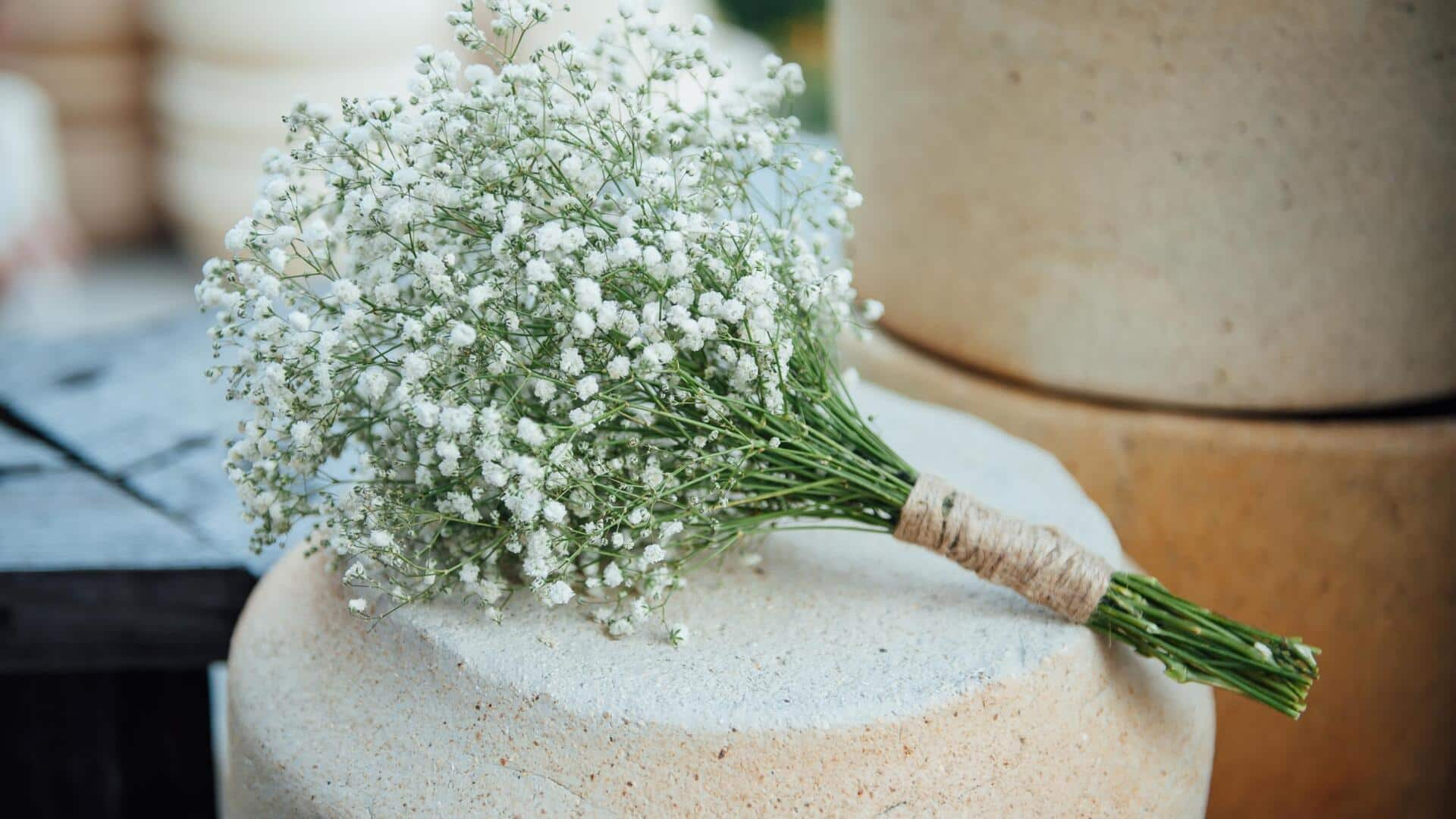
This is how you can grow delicate gypsophila at home
What's the story
Gypsophila (Baby's Breath) is a charming and ethereal plant that can transform your indoor garden into a space of tranquility and beauty. Despite its dainty appearance, raising gypsophila in indoor pots is surprisingly doable with a bit of care and the right conditions. This article offers key tips for cultivating these beauties at home, so they can flourish and bring happiness to your indoor spaces.
Potting essentials
Choosing the right pot and soil
Choosing the right pot and soil is key to growing healthy gypsophila. A pot with excellent drainage holes is vital to avoid waterlogging, which causes root rot. For soil, you want a well-draining mix that holds some moisture but lets excess water flow out. A mix of equal parts peat moss, perlite, and vermiculite provides the perfect environment for gypsophila roots.
Light requirements
Ensuring adequate light
Gypsophila thrives in bright, indirect sunlight. Choose a window spot where it can enjoy several hours of sunlight each day. Avoid direct afternoon sun as it can scorch the delicate leaves of your plant. If your home doesn't receive much natural light, you can use grow lights. Position them about 12 inches above your plants and keep them on for 14-16 hours each day to mimic natural conditions.
Hydration tips
Watering techniques
Proper watering is key to gypsophila's survival. Its soil should remain slightly damp, never waterlogged, to avoid root rot. Water whenever the top inch of soil dries out. During warm months or under intense grow lights, monitor moisture levels more frequently. Both overwatering and under-watering can damage its delicate roots, so moderation is crucial.
Nutrient needs
Fertilizing your plant
To promote healthy growth and flowering in your gypsophila, feed it with a balanced liquid fertilizer once a month/every four weeks during its active growing season i.e. from spring until summer. Use a diluted solution at half strength to supply your plant with vital nutrients without overwhelming it with chemicals. This gentle approach supports your plant's well-being without risking potential harm.
Care routine
Pruning and maintenance
Regular pruning is key to keeping gypsophila plants looking their best and encouraging fuller, denser growth. By gently but firmly removing any dead or yellowing stems at the very base, gardeners not only improve air circulation within the plant's foliage but also strategically redirect the plant's energy to the healthier, more promising growth points. This routine is a game-changer for the plant's overall vitality, guaranteeing it stays lively and luscious.